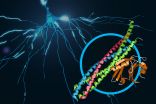(Press-News.org) Two Florida laws, enacted to combat prescription drug abuse and misuse in that state, led to a small but significant decrease in the amount of opioids prescribed the first year the laws were in place, a new study by Johns Hopkins Bloomberg School of Public Health researchers suggests.
One measure created a Prescription Drug Monitoring Program, a database that tracks individual prescriptions, including patient names, dates and amounts prescribed, so physicians can be on the lookout for excesses associated with addiction and illicit use. Another addresses so-called "pill mills," loosely regulated pain clinics that often see disproportionately high levels of opioid prescriptions. Florida's "pill mill" measure requires clinics to register with the state and be owned by a physician.
In the first 12 months after implementation of these laws, Florida's opioid prescriptions fell slightly, slipping 1.4 percent. At the same time, the volume of opioids prescribed decreased 2.5 percent, compared with Georgia's, a decrease equivalent to 750,000 pills per month. The amount per prescription also declined 5.6 percent, also compared with Georgia's, the researchers found. The declines were among the heaviest users and prescribers.
The findings will be published online August 17 in JAMA Internal Medicine.
In the years leading up to enactment, Florida, like the rest of the country, experienced a jump in prescription-drug overdose deaths. In Florida, they increased more than 80% between 2003 and 2009. The U.S. Centers for Disease Control and Prevention estimates that 44 people die each day from a prescription-drug overdose.
"These findings support the notion that there are policy solutions to the prescription drug epidemic," says Lainie Rutkow, JD, MPH, PhD, an associate professor in the Department of Health Policy and Management at the Bloomberg School of Public Health.
The two measures are considered important policy tools in the fight against opioid abuse and misuse. All fifty states and the District of Columbia currently have drug-monitoring programs in place. At least a dozen states have started regulating pain-management clinics.
For their analysis, researchers compared opioid prescriptions in Florida with those in Georgia for the 12 months before and after the two policies were implemented in the summer of 2011: July 2010 through June 2011 and October 2011 through September 2012. At the time, Georgia did not have comparable programs in place. The prescription data came from IMS Health LifeLink LRx, and included 36.9 million opioid prescriptions in Florida and Georgia.
The study examined total opioid volume prescribed per month; the average dosage, or morphine milligram equivalent, per transaction; the average days supply per transaction; and the total number of prescriptions. The study found no effect on the number of days supply.
INFORMATION:
"Effects of Florida's Prescription Drug Monitoring Program and Pill Mill Law on Opioid Prescribing and Utilization" was written by Lainie Rutkow, JD, PhD, MPH; Hsien-Yen Chang, PhD; Matthew Daubresse,
MHS; Daniel W. Webster, ScD, MPH; Elizabeth A. Stuart, PhD; Caleb Alexander, MD, MS.
The study was funded by the Robert Wood Johnson Foundation Public Health Law Research program and the U.S. Centers for Disease Control and Prevention.
Children with parents or caregivers currently serving in the military had a higher prevalence of substance use, violence, harassment and weapon-carrying than their nonmilitary peers in a study of California school children, according to an article published online by JAMA Pediatrics.
While most young people whose families are connected to the military demonstrate resilience, war-related stressors, including separation from parents because of deployment, frequent relocation and the worry about future deployments, can contribute to struggles for some of them, according ...
Menlo Park, Calif. -- Scientists have revealed never-before-seen details of how our brain sends rapid-fire messages between its cells. They mapped the 3-D atomic structure of a two-part protein complex that controls the release of signaling chemicals, called neurotransmitters, from brain cells. Understanding how cells release those signals in less than one-thousandth of a second could help launch a new wave of research on drugs for treating brain disorders.
The experiments, at the Linac Coherent Light Source (LCLS) X-ray laser at the Department of Energy's SLAC National ...
Adversity during the first six years of life was associated with higher levels of childhood internalizing symptoms, such as depression and anxiety, in a group of boys, as well as altered brain structure in late adolescence between the ages of 18 and 21, according to an article published online by JAMA Pediatrics.
Both altered brain structure and an increased risk of developing internalizing symptoms have been associated with adversity early in life.
Edward D. Barker, Ph.D., of King's College London, and coauthors examined how adverse experiences within the first six ...
Legislative efforts by the state of Florida to reduce prescription drug abuse and diversion appear to be associated with modest decreases in opioid prescribing and use, according to an article published online by JAMA Internal Medicine.
Prescription opioids provide necessary pain relief to millions of Americans but rates of opioid diversion, addiction and overdose deaths have soared since the mid-2000s. Florida was at the epicenter of this problem. In 2010, the Florida legislature addressed so-called pill mills or rogue pain management clinics where prescription drugs ...
Presymptomatic patients with the neurodegenerative disease amyotrophic lateral sclerosis (ALS) consumed more daily calories but had lower body-mass index (BMI) than those individuals without ALS in a study in the Netherlands that also looked at risk for the disease and associations with food and alcohol intake, according to an article published online by JAMA Neurology.
The cause of ALS is poorly understood. Diet is highly modifiable but previous studies have not identified a consistent nutrient that modifies susceptibility to ALS and contradictory results exist for the ...
Prior to the advent of human-caused global warming in the 19th century, the surface layer of Earth's oceans had undergone 1,800 years of a steady cooling trend, according to a new study. During the latter half of this cooling period, the trend was most likely driven by large and frequent volcanic eruptions.
An international team of researchers reported these findings in the August 17, 2015 issue of the journal Nature Geoscience. The study also indicates that the coolest temperatures occurred during the Little Ice Age--a period that spanned the 16th through 18th centuries ...
CHICAGO --- Some stressful experiences - such as chronic childhood abuse - are so overwhelming and traumatic, the memories hide like a shadow in the brain.
At first, hidden memories that can't be consciously accessed may protect the individual from the emotional pain of recalling the event. But eventually those suppressed memories can cause debilitating psychological problems, such as anxiety, depression, post-traumatic stress disorder or dissociative disorders.
A process known as state-dependent learning is believed to contribute to the formation of memories that ...
17.08.2015: Glaciers in Central Asia experience substantial losses in glacier mass and area. Along the Tien Shan, Central Asia's largest mountain range, glaciers have lost 27% of their mass and 18% of their area during the last 50 years. An international research team led by the GFZ German Research Centre for Geosciences and including the institute of the French Centre National de la Recherche Scientifique (CNRS) at Rennes University in particular, estimated that almost 3000 square kilometres of glaciers and an average of 5.4 gigatons of ice per year have been lost since ...
Lueneburg. Sustainability Scientists at Leuphana University of Lueneburg have devised a simple screening-based predicting procedure for region-specific environmental risks caused by veterinary antibiotics (VA). This procedure, called Usage Pattern-based Exposure Screening (UPES), makes use of utilization patterns of antibiotics in animal husbandry. By improving targeting, it enables the identification of particularly problematic antibiotic substances. It also enables the implementation of more advanced risk prediction tests, for example with the help of soil and water ...
DURHAM, N.C. -- We've all seen dewdrops form on spider webs. But what if they flung themselves off of the strands instead?
Researchers at Duke University and the University of British Columbia have now observed this peculiar phenomenon, which could benefit many industrial applications. As long as the strands are moderately hydrophobic and relatively thin, small droplets combining into one are apt to dance themselves right off of the tightrope. The discovery could form the basis of new coalescer technologies for water purification, oil refining and more.
The findings ...

